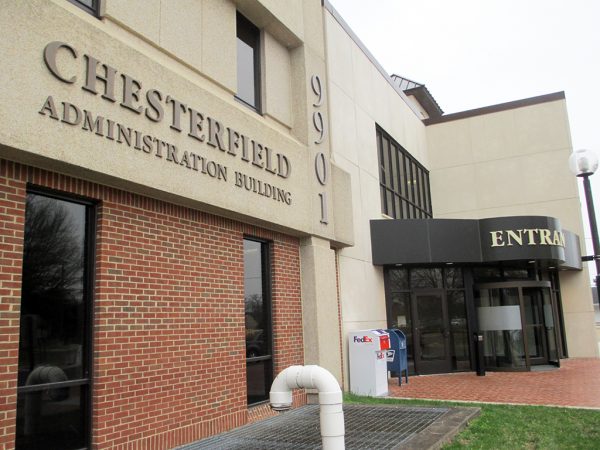Since assuming his position about two years ago as Chesterfield’s planning director, Andrew Gillies said a regular refrain during his tenure has been complaints about the county’s zoning ordinance.
The ordinance, a document that lays out what can be built where and under what circumstances in the county, has remained mostly unchanged since 1997. Now, Chesterfield has decided it’s high time to throw out the aging document and replace it with something more in line with modern development trends.
“It’s still a 1956 Oldsmobile,” Gillies said of the current ordinance. “Sometimes you have to just buy a new car.”
While the exact changes are to be determined in part by public input, county officials do have an interest in expanded by-right uses in residential districts, exploring ways the zoning ordinance can help keep suburban shopping centers viable and creating mixed-use districts (something the current ordinance doesn’t have), Gillies said.
The Board of Supervisors voted in mid-March to authorize staff to award White & Smith LLC to develop a new zoning ordinance. The county plans to spend $1 million on the project, most of it to pay White & Smith ($795,000) and the rest intended for potential add-on services such as further upgrades to the base version of a software program used to draft the new ordinance.
The contract will cover design and development services, as well as a new online ordinance tool. Originally planned to be financed in $350,000 budget allocations over three years, $100,000 of the fiscal year 2021 payment was trimmed out due to the coronavirus pandemic. The project received funding as part of the FY20 budget, and is expected to receive funding in FY22 as well.
The entire update process is expected to take two to three years. But due to the ongoing pandemic, it’s unclear when the update process actually will start, though it could get underway in early 2021, Gillies said.
The move is an effort to modernize the zoning ordinance to keep up with 21st century development patterns while keeping emerging development trends in mind.
Making it simpler
For residential districts, the county wants to see the development process smoothed out with expanded by-right uses in multifamily and single-family districts. In doing so, some development projects would be able to avoid the process of special permitting that requires applications, consideration by the planning commission and approval by supervisors.
Officials also want to look into smaller lot sizes for by-right development. The county’s smallest residential development lot under the current ordinance is 12,000 square feet. There also isn’t a home in the ordinance for condominiums as written, meaning condo developments have to go through the special-use process before shovels turn dirt.
The county also has its eye on the commercial side of its zoning ordinance, specifically in regard to the 60-odd suburban shopping centers in the locality. Gillies said that all of them, to varying degrees, struggle with changing consumer tastes and habits. One goal of the update is to review how the zoning ordinance can make it easier for developers to rethink how to use shopping centers.
Gillies floated the idea of residential development in shopping centers as a way to keep vibrancy in those places and maintain occupancy. Chesterfield County lacks mixed-use districts in its current zoning ordinance, and Gillies expressed interest in adding such districts.
There are other odds and ends involved in the update. The rules surrounding cash proffers in the county could be revisited but Gillies declined to elaborate on what that might look like at this time. The county would like to make the zoning ordinance as a document more user-friendly and easier to understand to give developers a better understanding of the process.
The update also will bring the ordinance up to speed with the county’s recently adopted comprehensive plan, which the board approved in May, senior planner Rachel Chieppa said.
The county is making moves toward a substantial public input component of the update, though the finer details haven’t been ironed out yet. Public input could include things such as focus groups and a steering committee, Chieppa said.
Since assuming his position about two years ago as Chesterfield’s planning director, Andrew Gillies said a regular refrain during his tenure has been complaints about the county’s zoning ordinance.
The ordinance, a document that lays out what can be built where and under what circumstances in the county, has remained mostly unchanged since 1997. Now, Chesterfield has decided it’s high time to throw out the aging document and replace it with something more in line with modern development trends.
“It’s still a 1956 Oldsmobile,” Gillies said of the current ordinance. “Sometimes you have to just buy a new car.”
While the exact changes are to be determined in part by public input, county officials do have an interest in expanded by-right uses in residential districts, exploring ways the zoning ordinance can help keep suburban shopping centers viable and creating mixed-use districts (something the current ordinance doesn’t have), Gillies said.
The Board of Supervisors voted in mid-March to authorize staff to award White & Smith LLC to develop a new zoning ordinance. The county plans to spend $1 million on the project, most of it to pay White & Smith ($795,000) and the rest intended for potential add-on services such as further upgrades to the base version of a software program used to draft the new ordinance.
The contract will cover design and development services, as well as a new online ordinance tool. Originally planned to be financed in $350,000 budget allocations over three years, $100,000 of the fiscal year 2021 payment was trimmed out due to the coronavirus pandemic. The project received funding as part of the FY20 budget, and is expected to receive funding in FY22 as well.
The entire update process is expected to take two to three years. But due to the ongoing pandemic, it’s unclear when the update process actually will start, though it could get underway in early 2021, Gillies said.
The move is an effort to modernize the zoning ordinance to keep up with 21st century development patterns while keeping emerging development trends in mind.
Making it simpler
For residential districts, the county wants to see the development process smoothed out with expanded by-right uses in multifamily and single-family districts. In doing so, some development projects would be able to avoid the process of special permitting that requires applications, consideration by the planning commission and approval by supervisors.
Officials also want to look into smaller lot sizes for by-right development. The county’s smallest residential development lot under the current ordinance is 12,000 square feet. There also isn’t a home in the ordinance for condominiums as written, meaning condo developments have to go through the special-use process before shovels turn dirt.
The county also has its eye on the commercial side of its zoning ordinance, specifically in regard to the 60-odd suburban shopping centers in the locality. Gillies said that all of them, to varying degrees, struggle with changing consumer tastes and habits. One goal of the update is to review how the zoning ordinance can make it easier for developers to rethink how to use shopping centers.
Gillies floated the idea of residential development in shopping centers as a way to keep vibrancy in those places and maintain occupancy. Chesterfield County lacks mixed-use districts in its current zoning ordinance, and Gillies expressed interest in adding such districts.
There are other odds and ends involved in the update. The rules surrounding cash proffers in the county could be revisited but Gillies declined to elaborate on what that might look like at this time. The county would like to make the zoning ordinance as a document more user-friendly and easier to understand to give developers a better understanding of the process.
The update also will bring the ordinance up to speed with the county’s recently adopted comprehensive plan, which the board approved in May, senior planner Rachel Chieppa said.
The county is making moves toward a substantial public input component of the update, though the finer details haven’t been ironed out yet. Public input could include things such as focus groups and a steering committee, Chieppa said.





Did the Board consider other proposals or run any kind of bidding process?
The 3/11 Board vote doc says it “was the unanimous determination of the Request for Proposals Evaluation Committee to recommend award of this contract to White & Smith, LLC. based on their extensive background in many areas required including code writing and public engagement.”
Also, that committee isn’t listed on the Chesterfield Boards & Commissions website…
The Request for Proposal (RFP) process is essentially the bidding process that you speak of. The county will put out an RFP and companies can submit bid/proposals for the work. A committee is initiated for each RFP, which usually consists of several people in leadership roles in the County and people in leadership roles within the affected Department (in this case probably Planning). It is not a standing committee, which is why it is not listed. They evaluate all the proposals/bids, which can involve interviews of top candidates, and make a recommendation. The Board can then either decide to go… Read more »